What’s the end of a year without a best of post?
Recently, I was asked by UK site Crime Fiction Lover to list my top crime reads for 2012. They would only let me pick five, but obviously I’ve read a lot more books worthy of mention than that. Here’s the long list.
He Died with his Eyes Open, Derek Raymond
A police procedural like no other, it starts, like so many other crime novels, with the discovery of a body. The unnamed cop (the story’s narrator) who catches the case is a tough talking sergeant from the Department of Unexplained Deaths, also known as A14, at the Factory police station. There’s no apparent motive and all the cop has to go on are a series of old cassette tapes in the dead man’s property that contain the deeply unhappy ramblings of a deeply unhappy man. Most police procedurals deal with crime from the point of view of the police. What’s unusual about this book is that the cop concerned is more like his victim.
Raymond was the pen name of English writer Robert William Arthur Cook, who eschewed his upper middle class family for a life of odd jobs, bohemian travel and frequent brushes with the law. Although he wrote for years, success eluded until with the publication of He Died with His Eyes Open in 1984, the first of five Factory books.
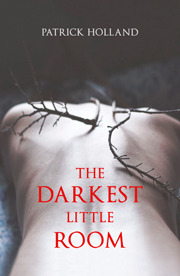 The Darkest Little Room, Patrick Holland
The Darkest Little Room, Patrick Holland
A dark and totally original take on one of the standard plots of crime fiction set in Asia, ‘foreigner-falls-for-bargirl-who-ends-up-much-more-than-she-seems’. Joseph is an Australian journalist living in Saigon with a sideline in blackmailing high profile philanderers who he photographs in compromising situations in brothels. One day a foreign businessman approaches him with a picture of a physically abused but beautiful woman held prisoner in a brothel known as ‘the darkest little room’. Before long, Joseph has rescued the woman, who is mysteriously free of any physical wounds, and fallen in love, only to have her snatched back again by the gang of traffickers who bought her to Vietnam.
Wonderfully drawn characters, acute (often painful) observations about the expatriate condition, a vivid depiction of Vietnam and a break neck plot make this a mesmerising read.
Wake in Fright, Kenneth Cooke
This story of masculinity, drinking and violence in regional Australia, written in 1961, still packs a punch today. John Grant is a mild mannered teacher working in a tiny speck of a town called Tiboonda. He has six weeks leave ahead of him and 140 pounds in his pocket. All that stands between him and six weeks in Sydney is an overnight train stop in Bundanyabba or ‘the Yabba’ as the locals call it. That is until he wanders into one of the Yabba’s local pubs and loses nearly all his money in a two up game. He wakes next morning, broke and at the mercy of the locals who, as he discovers, can literally kill a stranger with their brand of kindness.
Cooke handles Grant’s slow descent into the nightmare landscape that is the Yabba with slow burn ferocity, heightening the tension through a series of bizarre interactions with the local residents. Wake in Fright is a genuinely menacing story. It was also made into an excellent 1971 film, which helped re-kick start the Australian film industry in the seventies
Abbott is one of the best crime writers working today and Dare Me is her latest book. Addy and Beth have been best friends for years and the top dogs of their high school cheerleading squad. Beth is the captain, Addy always her faithful lieutenant. Cheerleading and their commanding place in it is the ground zero of their world. Their carefully constructed social hierarchy is thrown into chaos by the arrival of a new cheerleading coach. Addy finds herself particularly drawn to the new Coach and away from her old friend. But Beth is not someone to take rejection lying down. When a peripheral male acquaintance of the girls is found dead, it’s unclear whether murder, suicide or an accident is to blame. As the final game of the season approaches, Addy begins to wonder exactly what her old friend may be capable of.
In the hands of a lesser writer, Dare Me could have so easily been just another tale of teenage angst with an edge. But Abbott delivers a much more challenging story that’s not afraid to question some major sacred cows about young women and what they’re capable of. She nails all her characters and transforms their cadence, feelings, fears, and secrets into something very sinister, part dark noir, part suburban Lynchian nightmare.
 The Devil all the Time, Donald Ray Pollock
The Devil all the Time, Donald Ray Pollock
I read this book in the first week of January and it remained my best book of 2012. The Devil All the Time is a multi-generational gothic novel set in the backwoods Ohio and Virginia. It opens with the return of a soldier from the carnage of the Pacific war and his drift into religious madness over the terminal sickness of his wife. Other characters include a couple of revivalist Christians performers (one of whom has a bizarre side-line involving spiders), a corrupt backwoods law man and a husband and wife team of roaming serial killers, one of whom likes to photograph their victims in sexual positions.
This is rural noir with major kick. But no matter how sexually and physically deranged things get (and they get very deranged), Pollock avoids the temptation to play the story for cheap thrills. There is real humanity in these stories, even the most wretched of his characters struggle for meaning.
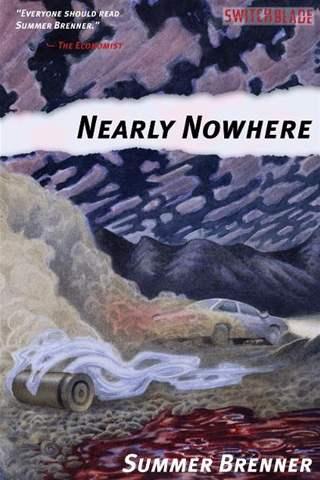 Nearly Nowhere, Summer Brenner
Nearly Nowhere, Summer Brenner
Kate lives in a small, secluded hardscrabble town in northern New Mexico with her free spirited and beautiful teenage daughter, Ruby. It’s not exactly the happiest of relationships, due to Ruby’s wild ways and Kate’s habit of bringing drifters home for a bit of sex and companionship. She’s grown tired of her latest pick-up, Troy. He is good looking, very mentally unhinged young man with a violent streak that does not take kindly to being dumped. No sooner does Kate think Troy is out of her life than she comes home to find her former lover nursing a gunshot wound, her daughter has disappeared, and a stash of drugs in the house she didn’t know she had. It’s hard to say much more without giving away the plot, save to say, all roads lead to the Idaho’s beautiful and dangerous wilderness area, a haven for loners and the odd Neo Nazi cult.
In a strange way, not a lot happens in this book and that’s the central appeal. There’s no massive body count and very little violence. Nearly Nowhere just a wonderfully understated story of generational secrets and misunderstanding set against the backdrop of some parts of the US I am completely unfamiliar with.
 The Kings of Cool, Don Winslow
The Kings of Cool, Don Winslow
The prequel to Savages, Winslow’s story of three Southern California drug dealers whose success in selling high quality, hydroponically grown marijuana attracts the unwelcome and deadly attention of a Mexican drug cartel. Ben is an ethical slacker and the business brains behind the operation. Chon is the muscle – he comes into his own when things get rough. O, the most annoying of the three is… well… I’m not really sure what she is. Let’s just settle on the messed up rich girl, the group’s mascot and popular culture cypher. The Kings of Cool looks at the three friends as they start out in the drug business in the 90s, as well as exploring their complicated histories and how they first met up. Interwoven into this is the story of another group of counter cultural types in Southern California back in the 60s, and the evolution of their decision to become drug traffickers, from the amateurish beginnings to the more serious consequences as the Summer of Love fades and the trade mutates into a high stakes business.
The Kings of Cool is the kind of high-octane crime thriller you expect from Winslow, however what makes it really interesting is his attempt to paint an alternative history of Southern California. This is depicted in terms of the changes in the drug culture and the people who inhabit it. Winslow’s writing has a fluid, almost effortless feel. It’s like he’s so on top of his game and knows what he’s saying so well that he can knock books out between beers over a lazy weekend. I’m sure that’s not the reality but whatever the case, his ability to impart complex backstory and character descriptions in a minimum of paragraphs is incredible.
Snowy Lane is a young police constable and amateur footballer, working in suburban Perth in the late- seventies, who gets swept up in the investigation into a string of murders of young women by a serial killer dubbed ‘Mr Gruesome’. The investigation not only changes his life, it ultimately entangles him in the political and financial corruption and excess that marked eighties Perth.
The book is split into three sections. The first deals with the Mr Gruesome killings and also introduces us to the cast characters including bent cops, crooked real estate dealers and aspiring politicians. A local man is arrested for the killings, but Snowy is certain it’s the wrong man, a hunch he’s unable to play out when the suspect commits suicide in jail. By part two the action has moved to 1986. Haunted by what he knows is his failure to catch the real killer, Snowy has left the police and is now working as an ambulance chasing private investigator. Part three is set in 1988. As the corruption of Perth’s elite moves into overdrive, a serial killer is again striking at women. Is it a copycat or has the real Mr Gruesome returned?
City of Light is a wonderful crime yarn that weaves aspects of a good solid police procedural with a sweeping overview of the under belly of the city’s history that reminded me of aspects of Ellroy’s LA quartet. It’s a bit over written in parts, and some of the colour is applied a little too thickly, but otherwise City of Light is a pretty impressive performance by a man who was obviously a fly on the wall for some of the seedier moments of the city’s history.
Only Lovers Left Alive, Dave Wallis
Not strictly a crime read, but what the hell. After a twenty year break, this year I started reading, or in some cases re-reading, science fiction books. I’ve developed a particular interest in the counter-culturally influenced dystopian science fiction that the Brits did so well in the sixties and early seventies. The pick of the bunch was a 1964 book called Only Lovers Left Alive, by a little known author called Dave Wallis.
It describes a world in which all adults mysteriously start to commit suicide and teenagers are left to run riot in the streets. They form into gangs and race around decaying cities on motorbikes, foraging for nylons, make-up, alcohol, food and entertainment. The theme of teenagers taking control may sound a big cliched to our 2012 sensibilities, but the story is wonderfully and quite subtly rendered. Aspects of it are also remarkably chilling. A film adaption starring the Rolling Stones was apparently in the works at one stage, but never happened.
In an ongoing attempt to improve my own short story writing skills, I read a lot of short fiction over the past year. The standouts include Scott Wolven’s Controlled Burn: Stories of Prison, Crime and Men, Donald Ray Pollock’s amazing collection, Knockemstiff, Roachkiller and Other Stories by New York writer Richie Narvaez, and Monkey Justice by my fellow Snubnose Press author, Patti Abbott. I’ve also loved John Shaw’s ongoing tribute to the pulp fiction of the seventies and eighties, Blood and Tacos.
See you in 2013.

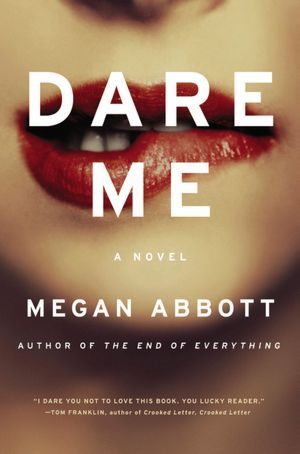
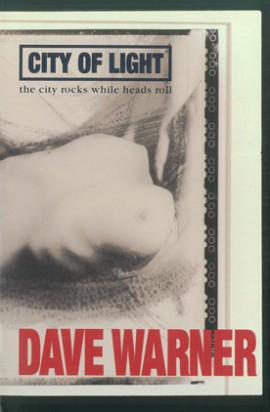
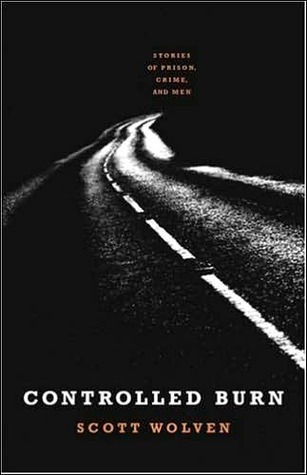



















Thanks for the mention! Doubly.
I have the Derek Raymond sitting on my shelf. Maybe this will prove an incentive to read it.
Great post. Makes it much easier to choose books to read over summer!
Some fine choices, sir. And a couple I need to check out.
Pingback: Favourite reads of 2012 | Angela Savage
Pingback: Book news (and other fun stuff!!): January 4th, 2013 | My Bookish Ways